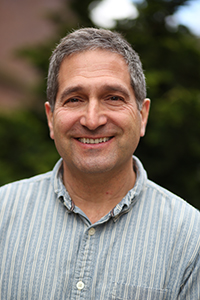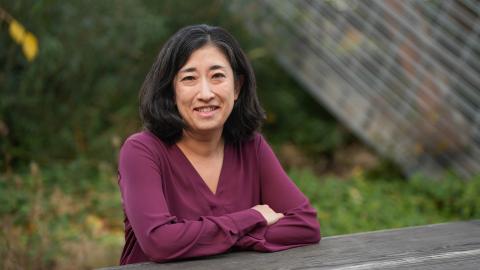
How do you lead 20 students on a field trip during a pandemic?
That was the question facing UW Teaching Professor Martin Cohen this fall as he prepared to teach a graduate-level course in occupational health and safety.
Students in his Environmental Health 564 class would typically visit a half-dozen local businesses in person as they learn to recognize health and safety hazards in industrial and construction workplaces.
“We usually cram into a vehicle together to go to each site and spend a couple hours touring the facility and meeting with the safety representative. This year, we had to rethink everything,” said Cohen, assistant chair for stakeholder engagement in the UW Department of Environmental & Occupational Health Sciences.
Cohen completely re-engineered the class, bringing it online as a multidimensional, virtual-reality experience that students could safely join from home.
Over three months, students “visited” a foundry, a construction site, a countertop fabricator, a battery manufacturer and a firefighting training academy to identify on-the-job risks and potential safety solutions.
A 360-degree view
Cohen served as his students’ eyes and ears at each site, using a combination of live video and prerecorded 360-degree video to bring the experience to them.
“When you’re visiting a worksite, you’re using all of your senses to study the relationship between people, processes and materials to predict where there may be hazards,” Cohen said. “We had to find a way to simulate that.”
Cohen wore a chest harness with an action-style video camera shooting live video at each location, shared over Zoom with students during class.
A special headset allowed him to hear student questions and relay them in real time to their site hosts.
Meanwhile, his co-instructor, Elena Austin, set up a 360-degree video camera in different work locations and recorded video to give students the feeling of being on site.
Later, Cohen added interactive hotspots within the 360-degree videos, allowing students to click on small, target-shaped icons to explore other features of the scene they may have missed when viewing it live.
Next best thing to being there
Cohen and Austin got high marks from students for their efforts to bring the whole audio-visual experience to life.
“With the camera view and mic sounds, we were able to visit these sites through Zoom and were still able to ask questions to our tour guides,” said Mariah Dittmore, MS student in Occupational Hygiene.
“There is nothing like seeing a job site in person and being able to have a look around with your own eyes,” Dittmore said, “but I thought they did an excellent job trying to allow us to still visually and audibly ‘travel’ to these sites.”
Cohen hopes to build up a library of virtual site visits for future students, but only as a back-up for in-person visits, which he hopes will resume when the course is offered next fall.



